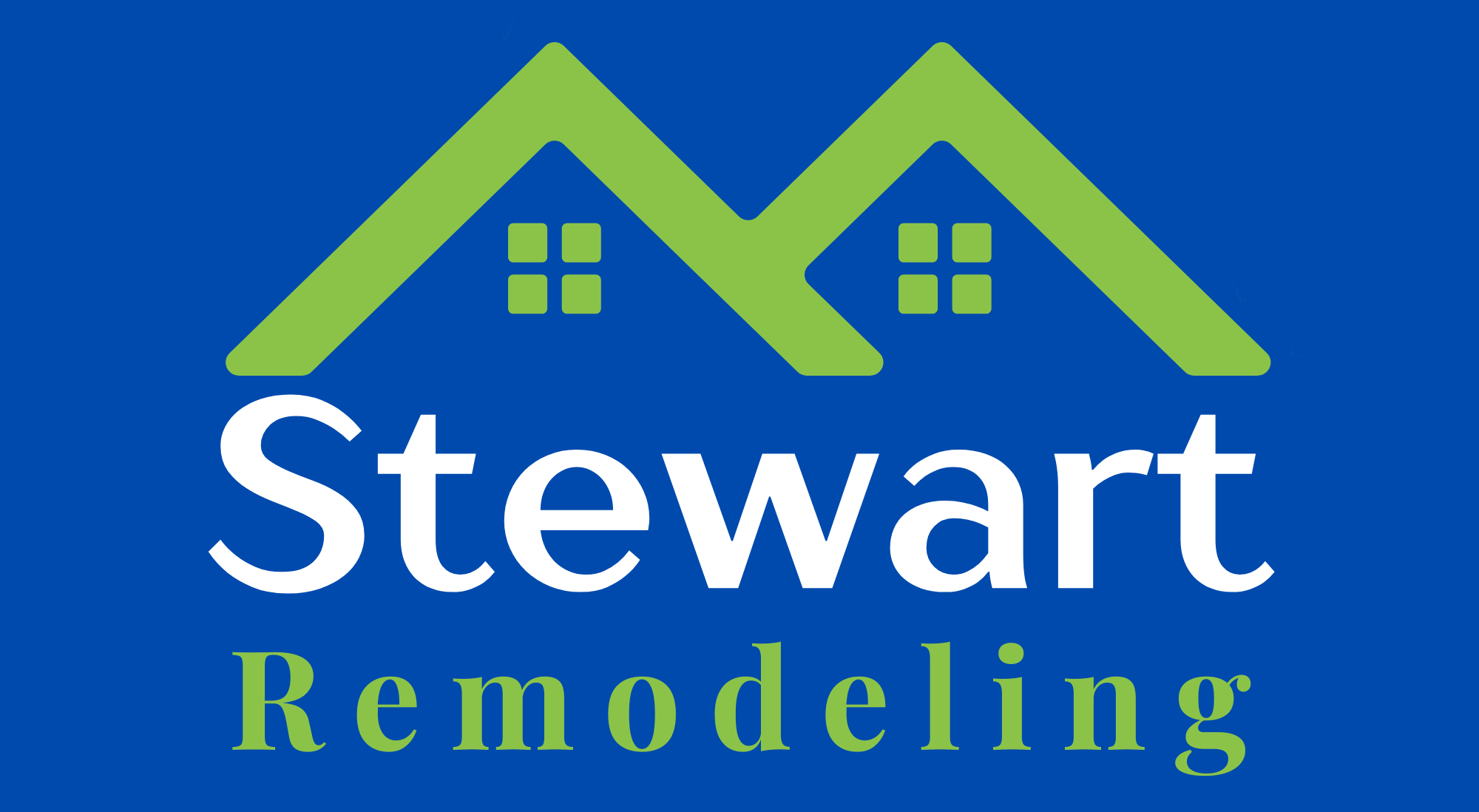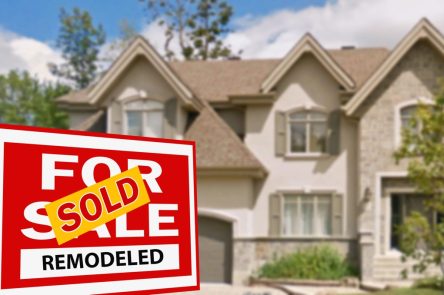Selling a home can be a daunting process, filled with numerous considerations and preparations. Among the most critical steps you can take is remodeling your home before putting it on the market. Not only can this significantly boost the property’s value, but it also enhances its appeal to potential buyers. In this comprehensive guide, we will explore the many facets of home remodeling, focusing on why it is essential, what projects offer the best return on investment, and how to approach the remodeling process effectively.
Understanding the Concept of Home Remodeling
Home remodeling refers to the process of making improvements to a property to enhance its appearance, functionality, and value. This can range from minor cosmetic updates to major renovations that alter the structure and layout of the home. The primary goal is to make the home more appealing to potential buyers, thereby increasing the likelihood of a quick and profitable sale.
Why Remodeling is Essential Before Selling
When a home is put on the market, it competes with numerous other properties, each vying for the attention of potential buyers. A well-remodeled home stands out in this crowded field, offering an inviting and move-in-ready option that can be highly attractive to buyers. Additionally, certain remodeling projects can significantly increase the value of a home, ensuring that sellers receive a higher return on their investment.
Increasing Property Value Through Remodeling
How Remodeling Increases Home Value
Remodeling can boost a home’s value in several ways. Firstly, it can address outdated or worn-out features that might detract from the property’s appeal. Secondly, it can introduce modern amenities and upgrades that buyers are looking for, such as energy-efficient windows, smart home technology, or luxurious finishes. Lastly, remodeling can enhance the overall aesthetics of the home, making it more visually appealing and increasing its marketability.
Key Remodeling Projects That Boost Value
Certain remodeling projects are known to offer a high return on investment. These include kitchen and bathroom renovations, which are often top priorities for buyers. Additionally, enhancing curb appeal through exterior improvements, upgrading flooring, and creating open living spaces can also add significant value. It’s important to focus on projects that will have the greatest impact on the home’s overall appeal and functionality.
Case Studies of Successful Remodels
Numerous case studies demonstrate the effectiveness of remodeling before selling. For instance, a homeowner who invested in a kitchen remodel, including new countertops, cabinets, and appliances, saw a significant increase in their home’s value and received multiple offers within days of listing. Another example involves a bathroom upgrade that included modern fixtures and improved lighting, resulting in a quick sale at a price well above the initial market value.
Enhancing Curb Appeal
First Impressions Matter
The exterior of a home is the first thing potential buyers see, and first impressions are crucial. Enhancing curb appeal can make a significant difference in attracting buyers. Simple improvements such as a fresh coat of paint, new landscaping, and updated lighting can transform the look of a home and create a welcoming atmosphere.
Exterior Remodeling Ideas
There are numerous ways to enhance the exterior of a home. Repainting the front door, adding decorative elements such as shutters or flower boxes, and updating the garage door can all make a big impact. Additionally, power washing the exterior surfaces, repairing any visible damage, and ensuring the lawn and garden are well-maintained can greatly improve the home’s appearance.
Landscaping Tips for Maximum Impact
A well-landscaped yard can add considerable value to a home. Simple landscaping tips include planting colorful flowers, trimming bushes and trees, and installing outdoor lighting. Creating defined garden beds, adding mulch, and ensuring the lawn is green and healthy are also effective ways to enhance curb appeal. For a more dramatic transformation, consider adding features such as a walkway, water feature, or outdoor seating area.
Kitchen Remodeling: The Heart of the Home
Modern Kitchen Trends
The kitchen is often considered the heart of the home, and modern buyers are looking for functional, stylish, and well-equipped kitchens. Current trends include open-concept designs, large islands, high-end appliances, and sleek cabinetry. Incorporating these elements into a kitchen remodel can make the space more appealing and increase the home’s overall value.
Cost-Effective Kitchen Upgrades
Not all kitchen remodels need to be expensive to be effective. Cost-effective upgrades such as repainting cabinets, updating hardware, and installing new lighting can make a significant difference. Additionally, replacing outdated countertops with modern materials like quartz or granite, and adding a stylish backsplash can refresh the look of the kitchen without breaking the bank.
Maximizing ROI with Kitchen Remodels
To maximize the return on investment, it’s important to focus on updates that will have the greatest impact. This includes ensuring the kitchen layout is functional and making sure all appliances are in good working order. Investing in quality materials and finishes that appeal to a broad range of buyers can also help ensure a high ROI. Consulting with a real estate professional can provide insights into what features are most sought after in your specific market.
Bathroom Upgrades: Small Changes, Big Impact
Popular Bathroom Remodeling Ideas
Bathrooms are another key area where remodeling can make a significant impact. Popular upgrades include installing modern fixtures, updating vanities, and adding new tile. Features such as walk-in showers, double sinks, and heated floors are also highly desirable. Ensuring the bathroom is clean, bright, and functional can greatly enhance its appeal.
Budget-Friendly Bathroom Improvements
Even on a limited budget, bathroom improvements can be highly effective. Simple updates such as replacing outdated faucets, adding a fresh coat of paint, and updating lighting fixtures can make a big difference. Additionally, regrouting tile, replacing the shower curtain, and adding new accessories can refresh the space without significant expense.
The Impact of a Modern Bathroom on Home Sales
A modern, updated bathroom can be a major selling point for potential buyers. It suggests that the home has been well-maintained and is move-in ready. Bathrooms that are clean, functional, and stylish can significantly increase the perceived value of a home and make it more appealing in a competitive market.
Living Space Improvements
Open Floor Plans and Their Appeal
Open floor plans are highly desirable in modern homes. They create a sense of spaciousness and allow for better flow between living areas. Removing non-structural walls to create an open layout can make a home feel larger and more inviting. This type of remodel can be particularly appealing to families and those who enjoy entertaining.
Enhancing Living Rooms and Common Areas
Living rooms and common areas are central to the home’s overall feel. Enhancing these spaces through updated flooring, fresh paint, and modern furnishings can make a big impact. Additionally, creating a focal point such as a fireplace or built-in shelving can add character and charm to the space.
The Role of Lighting in Creating Inviting Spaces
Proper lighting is essential in creating inviting and functional living spaces. Natural light is highly desirable, so ensuring windows are clean and unobstructed can help. Additionally, adding various types of lighting such as recessed lights, pendant fixtures, and floor lamps can enhance the ambiance and functionality of the space. Lighting can highlight key features and make rooms feel more spacious and welcoming.
Bedroom Remodeling for a Cozy Retreat
Master Bedroom Upgrades
The master bedroom should be a cozy retreat for potential buyers. Upgrades such as new flooring, fresh paint, and modern lighting can make a big difference. Additionally, adding features such as a walk-in closet or an en-suite bathroom can enhance the appeal and value of the space.
Creating a Luxurious Guest Room
A well-appointed guest room can be a significant selling point. Simple upgrades such as fresh bedding, new furniture, and updated décor can create a welcoming space for guests. Ensuring the room is clean, bright, and comfortable can make a positive impression on potential buyers.
Tips for Kid-Friendly Bedrooms
For families with children, kid-friendly bedrooms can be a major attraction. Simple updates such as fresh paint in neutral colors, durable flooring, and ample storage can make the room more functional and appealing. Ensuring the space is safe, with no sharp edges or hazardous materials, is also important.
Energy Efficiency Upgrades
The Benefits of Energy-Efficient Homes
Energy efficiency is increasingly important to modern buyers. Homes with energy-efficient features are not only more environmentally friendly but also offer significant cost savings on utility bills. Upgrading to energy-efficient windows, insulation, and HVAC systems can make a home more attractive to buyers and increase its value.
Top Energy-Saving Remodeling Projects
Key energy-saving projects include installing energy-efficient windows and doors, upgrading insulation, and replacing old HVAC systems with high-efficiency models. Additionally, adding solar panels, energy-efficient lighting, and smart thermostats can further enhance the home’s energy efficiency and appeal.
How Energy Efficiency Attracts Buyers
Energy-efficient homes are highly attractive to buyers because they offer long-term cost savings and are better for the environment. Highlighting these features in the listing can set the home apart from others on the market. Providing information on energy savings and potential tax incentives can also make the home more appealing.
Smart Home Technology
Integrating Smart Home Features
Smart home technology is becoming increasingly popular. Integrating features such as smart thermostats, security systems, and automated lighting can enhance the functionality and appeal of a home. These upgrades can make a home more convenient and efficient, attracting tech-savvy buyers.
The Appeal of Home Automation
Home automation offers numerous benefits, including increased security, energy efficiency, and convenience. Features such as smart locks, automated lighting, and voice-controlled assistants can make daily life easier and more enjoyable. These high-tech features can be a major selling point for modern buyers.
Cost vs. Value of Smart Home Upgrades
While smart home upgrades can be relatively inexpensive, they can add significant value to a home. Simple additions such as smart thermostats and lighting can offer a high return on investment. More advanced systems, such as integrated security and automation systems, can also provide a strong selling point and enhance the overall value of the home.
Creating Outdoor Living Spaces
Decks, Patios, and Outdoor Kitchens
Outdoor living spaces are highly desirable, especially in regions with mild climates. Adding features such as decks, patios, and outdoor kitchens can extend the living space and create a great area for entertaining. These improvements can significantly enhance the home’s appeal and value.
Designing Functional Outdoor Areas
Functional outdoor areas should be well-designed and comfortable. This includes ensuring there is adequate seating, shade, and lighting. Additionally, creating defined spaces for dining, lounging, and cooking can make the outdoor area more functional and inviting.
Seasonal Appeal of Outdoor Living Spaces
Outdoor living spaces can be enjoyed year-round with the right design. Adding features such as fire pits, outdoor heaters, and covered areas can make the space usable in various weather conditions. Highlighting the seasonal appeal of these spaces can attract buyers looking for versatile outdoor living options.
Basement and Attic Conversions
Converting Basements into Usable Space
Converting a basement into usable living space can add significant value to a home. This can include creating a family room, home office, or additional bedroom. Ensuring the space is well-lit, dry, and comfortable is essential for making it a functional and appealing area.
Attic Transformations
Attic transformations can also add valuable living space. This can include creating a loft area, additional bedroom, or even a home office. Proper insulation, lighting, and ventilation are key to making the attic a comfortable and functional space.
Adding Livable Square Footage
Adding livable square footage through basement and attic conversions can significantly increase the home’s value. This additional space can make the home more appealing to larger families or those in need of extra room for guests, hobbies, or work-from-home setups.
Home Office Renovations
The Growing Demand for Home Offices
The demand for home offices has grown significantly, especially with the rise of remote work. Creating a dedicated home office space can be a major selling point for potential buyers. This can include converting a spare bedroom, basement, or even a corner of the living room into a functional workspace.
Designing an Efficient Home Workspace
An efficient home workspace should be quiet, well-lit, and equipped with necessary amenities. This includes a comfortable desk and chair, ample storage, and access to electrical outlets and internet connections. Ensuring the space is organized and free of distractions can make it more appealing.
Increasing Home Value with a Home Office
A well-designed home office can add significant value to a home. Highlighting this feature in the listing can attract buyers who work from home or need a dedicated space for studying or hobbies. Ensuring the office is versatile and can be easily adapted for different uses can also enhance its appeal.
Incorporating Universal Design
The Importance of Accessibility
Universal design principles focus on making a home accessible and usable for people of all ages and abilities. This can include features such as wider doorways, step-free entries, and accessible bathrooms. Incorporating these features can make the home more appealing to a broader range of buyers, including those with mobility issues.
Universal Design Principles
Key universal design principles include ensuring that spaces are easily navigable and usable by everyone. This can involve installing grab bars in bathrooms, creating open floor plans, and ensuring all switches and outlets are at accessible heights. These features can enhance the functionality and safety of the home.
Attracting a Broader Range of Buyers
Homes with universal design features can attract a broader range of buyers, including seniors and those with disabilities. Highlighting these features in the listing can set the home apart and make it more appealing. Additionally, universal design can add long-term value by making the home adaptable to different needs over time.
ROI of Home Remodeling Projects
Understanding Return on Investment
Return on investment (ROI) is a key consideration when planning home remodeling projects. It refers to the percentage of the cost of the remodel that is recouped in the increased value of the home. Focusing on high-ROI projects can ensure that the investment pays off when the home is sold.
Top High-ROI Remodeling Projects
Some of the top high-ROI remodeling projects include kitchen and bathroom renovations, adding a deck or patio, and upgrading to energy-efficient windows and doors. These projects tend to offer a high return because they address key areas of interest for buyers and can significantly enhance the home’s appeal and value.
Avoiding Low-ROI Upgrades
It’s important to avoid low-ROI upgrades that may not add significant value to the home. This includes overly personalized or niche improvements that may not appeal to a broad range of buyers. Consulting with a real estate professional can provide insights into which projects are most likely to offer a high return in your specific market.
Financing Your Remodeling Projects
Budgeting for Home Remodeling
Budgeting is a crucial step in any home remodeling project. This involves determining how much you can afford to spend and allocating funds to the most important areas. It’s important to leave some room in the budget for unexpected expenses that may arise during the project.
Financing Options for Homeowners
There are several financing options available for homeowners looking to remodel. This includes home equity loans, personal loans, and refinancing. Each option has its pros and cons, so it’s important to carefully consider which is best for your situation. Consulting with a financial advisor can provide valuable guidance.
Cost vs. Value: Making Smart Investments
When planning remodeling projects, it’s important to balance cost and value. This involves prioritizing projects that offer a high return on investment and avoiding those that may not add significant value. Careful planning and budgeting can help ensure that the investment pays off when the home is sold.
Choosing the Right Contractor
Finding Reputable Contractors
Choosing the right contractor is essential for a successful remodeling project. It’s important to research and find reputable contractors with good reviews and a proven track record. Asking for recommendations from friends, family, and neighbors can also be helpful.
Questions to Ask Potential Contractors
When interviewing potential contractors, it’s important to ask key questions such as their experience with similar projects, their timeline, and their pricing. Additionally, asking for references and reviewing their previous work can provide valuable insights into their capabilities and reliability.
Avoiding Common Contractor Pitfalls
Common contractor pitfalls include choosing the lowest bid without considering quality, not checking references, and failing to get everything in writing. It’s important to thoroughly vet contractors and ensure there is a clear contract outlining the scope of work, timeline, and payment terms.
DIY Remodeling: When to Consider It
Pros and Cons of DIY Remodeling
DIY remodeling can be a cost-effective way to make improvements, but it’s important to weigh the pros and cons. Pros include saving money on labor costs and having control over the project. Cons include the potential for mistakes, time commitment, and the need for specialized skills and tools.
Simple DIY Projects That Add Value
There are several simple DIY projects that can add value to a home. This includes painting, installing new hardware, updating lighting fixtures, and landscaping. These projects can be completed with minimal tools and experience, making them a good option for DIY enthusiasts.
When to Hire Professionals
For more complex projects, it’s often best to hire professionals. This includes major renovations such as kitchen and bathroom remodels, structural changes, and electrical or plumbing work. Hiring professionals ensures the work is done correctly and safely, and can prevent costly mistakes.
Preparing for the Market
Timing Your Remodeling Projects
Timing is important when planning remodeling projects. It’s best to start projects well in advance of listing the home to ensure everything is completed on time. Additionally, certain projects may be best done during specific seasons, such as exterior work in the spring or summer.
Staging Your Home for Sale
Staging the home is an important step in preparing for the market. This involves arranging furniture and décor to highlight the home’s best features and create a welcoming atmosphere. Professional staging can make a big difference in how potential buyers perceive the home.
Marketing a Remodeled Home
Marketing a remodeled home involves highlighting the improvements and upgrades that have been made. This can include high-quality photos, detailed descriptions, and listing all the new features and benefits. Working with a real estate agent can help ensure the home is effectively marketed to attract the right buyers.
Legal and Regulatory Considerations
Permits and Regulations
It’s important to ensure all remodeling projects comply with local building codes and regulations. This often involves obtaining the necessary permits and having the work inspected. Failing to do so can result in fines and complications when selling the home.
Ensuring Compliance with Local Laws
Compliance with local laws is essential for a smooth remodeling process. This includes adhering to zoning regulations, building codes, and homeowner association rules. Consulting with a professional can help ensure all requirements are met and avoid legal issues.
Avoiding Legal Issues During Remodeling
Common legal issues during remodeling include disputes with contractors, violations of building codes, and issues with permits. It’s important to have a clear contract with the contractor, ensure all work is permitted and inspected, and address any issues promptly to avoid complications.
Common Remodeling Mistakes to Avoid
Over-Improving for the Neighborhood
Over-improving a home can result in a poor return on investment. It’s important to consider the value of other homes in the neighborhood and avoid making improvements that exceed the market value. Consulting with a real estate professional can provide insights into the appropriate level of improvements.
Ignoring Buyer Preferences
Ignoring buyer preferences can result in a home that is less appealing. It’s important to consider current trends and what buyers are looking for in a home. This includes focusing on high-impact areas such as kitchens and bathrooms and incorporating modern, functional features.
Skimping on Quality
Skimping on quality can lead to problems down the line. It’s important to invest in quality materials and workmanship to ensure the improvements last and add value. Cutting corners can result in costly repairs and negatively impact the home’s appeal and value.
Case Studies of Successful Home Sales Post-Remodeling
Real-Life Examples
Numerous real-life examples highlight the benefits of remodeling before selling. For instance, a homeowner who invested in a kitchen remodel saw a significant increase in their home’s value and received multiple offers within days of listing. Another example involves a bathroom upgrade that included modern fixtures and improved lighting, resulting in a quick sale at a price well above the initial market value.
Lessons Learned from Successful Sellers
Successful sellers often share common strategies, such as focusing on high-impact areas, investing in quality materials, and working with reputable contractors. Additionally, timing the remodeling projects well in advance of listing and effectively marketing the improvements can make a big difference.
Interviews with Real Estate Experts
Real estate experts emphasize the importance of remodeling before selling. They highlight key areas to focus on, such as kitchens, bathrooms, and curb appeal, and provide insights into current market trends and buyer preferences. Consulting with experts can provide valuable guidance for homeowners planning to remodel before selling.
FAQs on Home Remodeling Before Selling
What are the most important areas to remodel before selling?
Kitchens, bathrooms, and curb appeal are typically the most important areas to focus on, as they offer the highest return on investment and are key areas of interest for buyers.
How much should I budget for remodeling before selling?
The budget for remodeling can vary widely depending on the scope of the project and the home’s condition. It’s important to prioritize high-impact areas and consult with a real estate professional to determine the appropriate budget.
Is it worth it to hire a professional stager?
Professional staging can significantly enhance a home’s appeal and make it more attractive to potential buyers. While it involves an additional cost, the investment can pay off in a quicker sale and higher selling price.
How can I ensure my remodeling projects are up to code?
Ensuring projects are up to code involves obtaining the necessary permits, working with licensed contractors, and having the work inspected. Consulting with a professional can help ensure all requirements are met.
What are some cost-effective remodeling ideas?
Cost-effective remodeling ideas include painting, updating hardware and fixtures, landscaping, and making simple cosmetic updates. These projects can significantly enhance the home’s appeal without a major investment.
When is the best time to start remodeling before selling?
It’s best to start remodeling projects well in advance of listing the home to ensure everything is completed on time. Certain projects, such as exterior work, may be best done during specific seasons, such as spring or summer.
The Power of Remodeling Before Selling
Remodeling your home before selling can significantly enhance its appeal, increase its value, and make it more attractive to potential buyers. By focusing on key areas, investing in quality improvements, and effectively marketing the remodeled home, sellers can ensure a quicker sale and a higher return on their investment. Whether you’re planning a major renovation or simple updates, remodeling can make a big difference in the success of your home sale.




